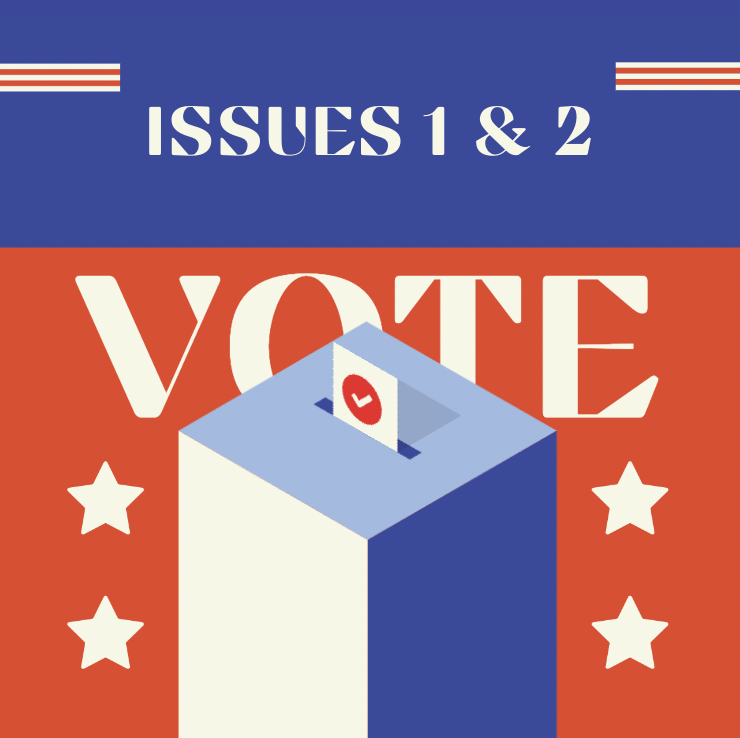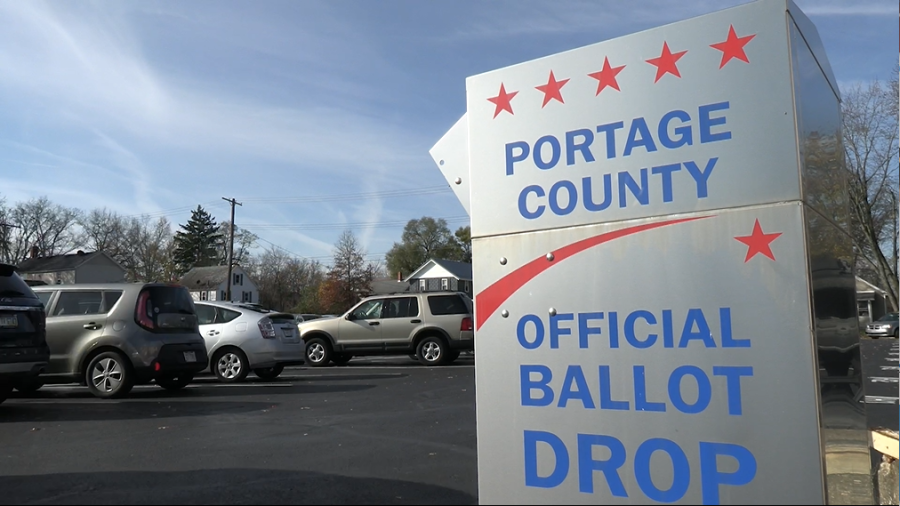Today, voters across Ohio return to the polls. The two most highly contested issues on the ballot are an amendment stating a constitutional right to abortion and the legalization of recreational marijuana.
These two amendments have been at the forefront of debate in the state of Ohio with each side of both issues attempting to sway voters their way with misinformation running rampant, mainly surrounding the conversation regarding issue one.
If voters in Ohio do not pass this amendment, this opens the door for Congressional Republicans to instate a full abortion ban, even in cases of rape, incest or if the life of the woman is in danger.
The amendment proposed, titled the Right to Make Reproductive Decisions Including Abortion Initiative, would “establish a state constitutional right to ‘make and carry out one’s own reproductive decisions, including but not limited to’ decisions about abortion, contraception, fertility treatment, miscarriage care, and allow the state to restrict abortion after fetal viability, except when ‘necessary to protect the pregnant patient’s life or health.’”
To the common person, this language can be incredibly confusing, and that is exactly the goal of legislators.
The misinformation surrounding the debate of Ohio Issue 1 is mainly regarding to what extent it codifies the legality of abortion. Pro-life groups across the state have been pushing the rhetoric that this amendment would allow women to have late-term abortions up to minutes before delivery, which is nowhere near the truth of the bill’s text. The term “abortion on demand” has been thrown around as well by these same groups that are arguing that it takes away any and all restrictions on abortion procedures, making the assumption that women are using abortion as a contraceptive rather than a last resort, which could not be further from the truth.
One of the loudest voices in the argument against Issue 1 is Protect Women Ohio, “a coalition of concerned family and life leaders, parents, health and medical experts, and faith leaders in Ohio focused on ensuring that radical out-of-state organizations aren’t able to rewrite our constitution to give Ohio one of the most extreme abortion laws in the country.” Amy Natoce, a spokesperson for this group states “By failing to explicitly define viability, and by giving abortionists the final word in determining when a child is viable on a case-by-case basis, Issue 1 leaves the door wide open for painful, late-term abortions.”
There is a lot to unpack here with Ms. Natoce’s statement. First off, there is no such thing as “abortionists,” rather the people who perform abortion procedures are medical professionals with a minimum of 10 years of education under their belt. That being said, anti-abortion activists seem to be under the impression that they know better than medical professionals when it comes to the decision of whether or not an abortion should be performed. This obviously is not a decision that anyone, the doctor nor the pregnant woman, takes lightly, despite the perceptions of this group and many others.
One of my biggest questions regarding this group, is why should religious leaders have any place in a woman’s private medical decisions? Why should anyone, regardless of their ideology or faith have any input besides a woman and her doctor? In this country, we have freedom of religion which allows individuals to practice whatever religion they want without government interference, but we also have freedom from religion with a clear separation of church and state. By failing to pass this amendment, we are closing this gap and allowing the religious beliefs of the few to infiltrate the lives of millions of Americans and allow these religious beliefs to dictate the medical decisions of women, stripping them of their bodily autonomy.
The second issue that Ohioans are voting on is the legalization of recreational marijuana. If voters pass this amendment to the state constitution, the state would begin “allowing the sale and purchase of marijuana, which a new Division of Cannabis Control would regulate, allowing adults who are at least 21 years old to use and possess marijuana, including up to 2.5 ounces of marijuana; and enacting a 10% tax on marijuana sales.” If this amendment passes, Ohio will be the 24th state in the union to legalize recreational marijuana with this being the second time marijuana is on the ballot, the first time being in 2015 when it was opposed by 64% of voters.
Effectively, this amendment would begin regulating marijuana similarly to the regulation of alcohol. Not only is this practical due to the lack of evidence that marijuana should be a schedule one narcotic as it is today, being treated as a felony offense. The Coalition to Regulate Marijuana like Alcohol has been leading the charge for the legalization of recreational marijuana, stating that this would “fix a broken system while ensuring local control, keeping marijuana out of the hands of children, and benefiting everyone.”
Frankly, the only reason marijuana is classified as a class one substance is due to ease of mass incarceration. This classification began with the Nixon administration’s war on drugs, in which primarily Black Americans were targeted and incarcerated for their drug use, citing that “There’s no safe, effective medical use, and a high abuse potential, and it can’t be used in medical settings,” said Russ Baer, staff coordinator in the Office of Congressional and Public Affairs at the DEA. This statement is based on the 1970 Controlled Substances Act, a long since outdated program that is no longer factually correct with countless studies showing that marijuana is a viable medicinal substance that has proven effective in helping to treat mental and physical conditions.
In opposition to this effort to legalize marijuana and to decriminalize recreational use and possession of the drug, the workers organization Protect Ohio Workers and Families is leading the charge.
On the website of this organization, they state “According to the CDC, marijuana use while pregnant can lead to lower birth weight and abnormal neurological development.” With this logic, both alcohol and tobacco should both be illegal as there are studies that prove that usage during pregnancy creates the same adverse effects that follow a child through their whole life. Obviously, this is not what the organization cares about. Their site goes on to say “Issue 2 is a welfare program for drug dealers. It not only allows convicted drug dealers to own and invest in marijuana stores and farms, but also gives them special preference and funding assistance. We shouldn’t allow just anyone to be able to sell powerful drugs.” Simply put, marijuana is not a powerful drug, nor is there any evidence of it being chemically addictive as they claim on their website.
This is a prime example of misinformation being spread surrounding the proposed amendments in Ohio. I urge all voters to do their own research before voting in any election, but especially for this one as these two highly contested issues will be on the ballot with these two issues being some of the most polarizing topics in the United States today.
Jackson Small is an opinion writer. Contact him at [email protected]
























